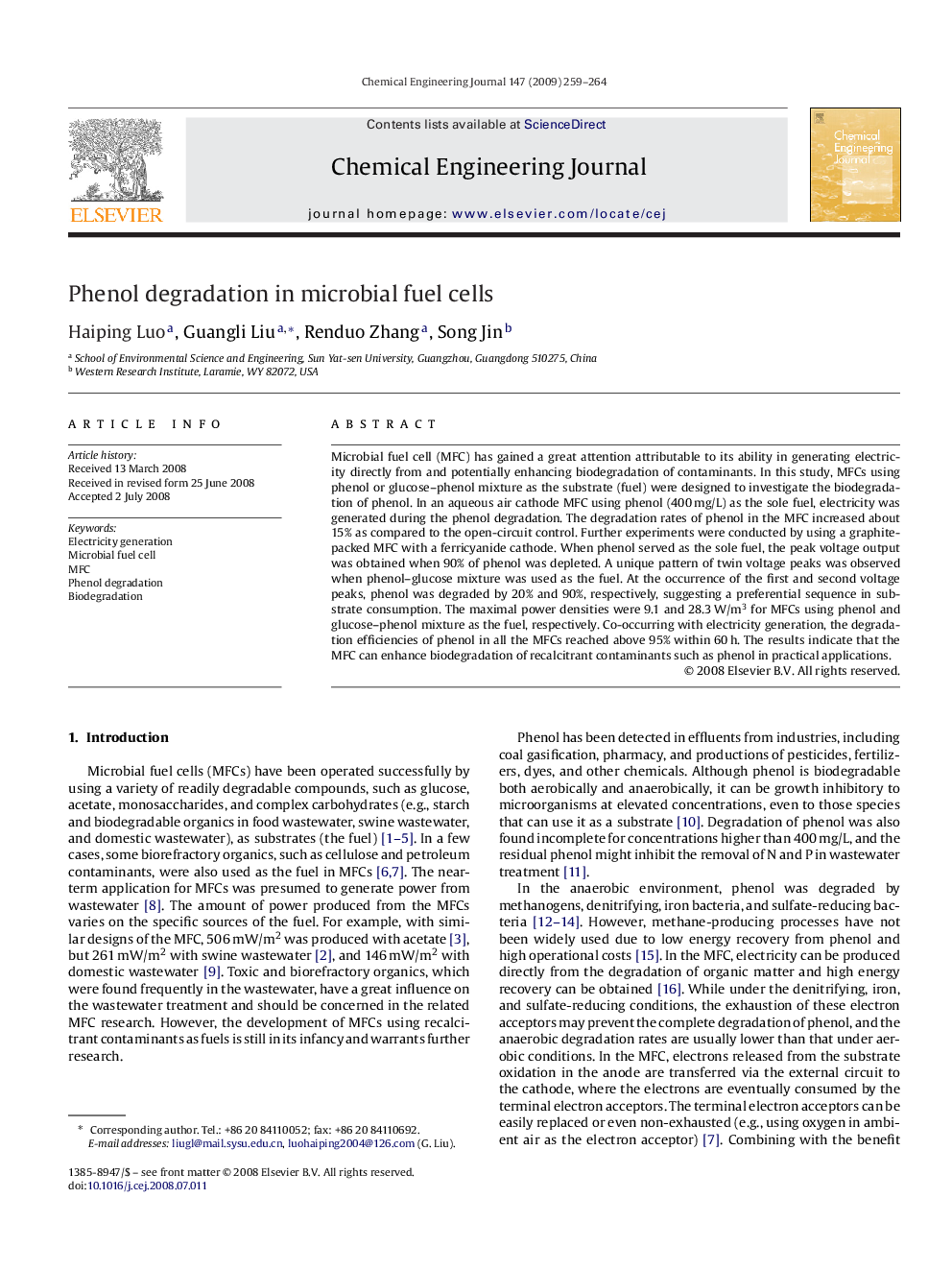| Article ID | Journal | Published Year | Pages | File Type |
|---|---|---|---|---|
| 152553 | Chemical Engineering Journal | 2009 | 6 Pages |
Microbial fuel cell (MFC) has gained a great attention attributable to its ability in generating electricity directly from and potentially enhancing biodegradation of contaminants. In this study, MFCs using phenol or glucose–phenol mixture as the substrate (fuel) were designed to investigate the biodegradation of phenol. In an aqueous air cathode MFC using phenol (400 mg/L) as the sole fuel, electricity was generated during the phenol degradation. The degradation rates of phenol in the MFC increased about 15% as compared to the open-circuit control. Further experiments were conducted by using a graphite-packed MFC with a ferricyanide cathode. When phenol served as the sole fuel, the peak voltage output was obtained when 90% of phenol was depleted. A unique pattern of twin voltage peaks was observed when phenol–glucose mixture was used as the fuel. At the occurrence of the first and second voltage peaks, phenol was degraded by 20% and 90%, respectively, suggesting a preferential sequence in substrate consumption. The maximal power densities were 9.1 and 28.3 W/m3 for MFCs using phenol and glucose–phenol mixture as the fuel, respectively. Co-occurring with electricity generation, the degradation efficiencies of phenol in all the MFCs reached above 95% within 60 h. The results indicate that the MFC can enhance biodegradation of recalcitrant contaminants such as phenol in practical applications.
